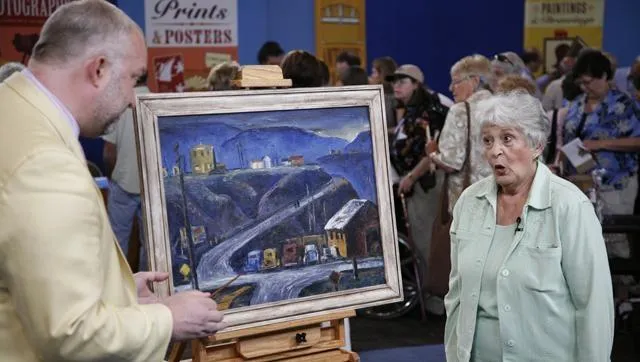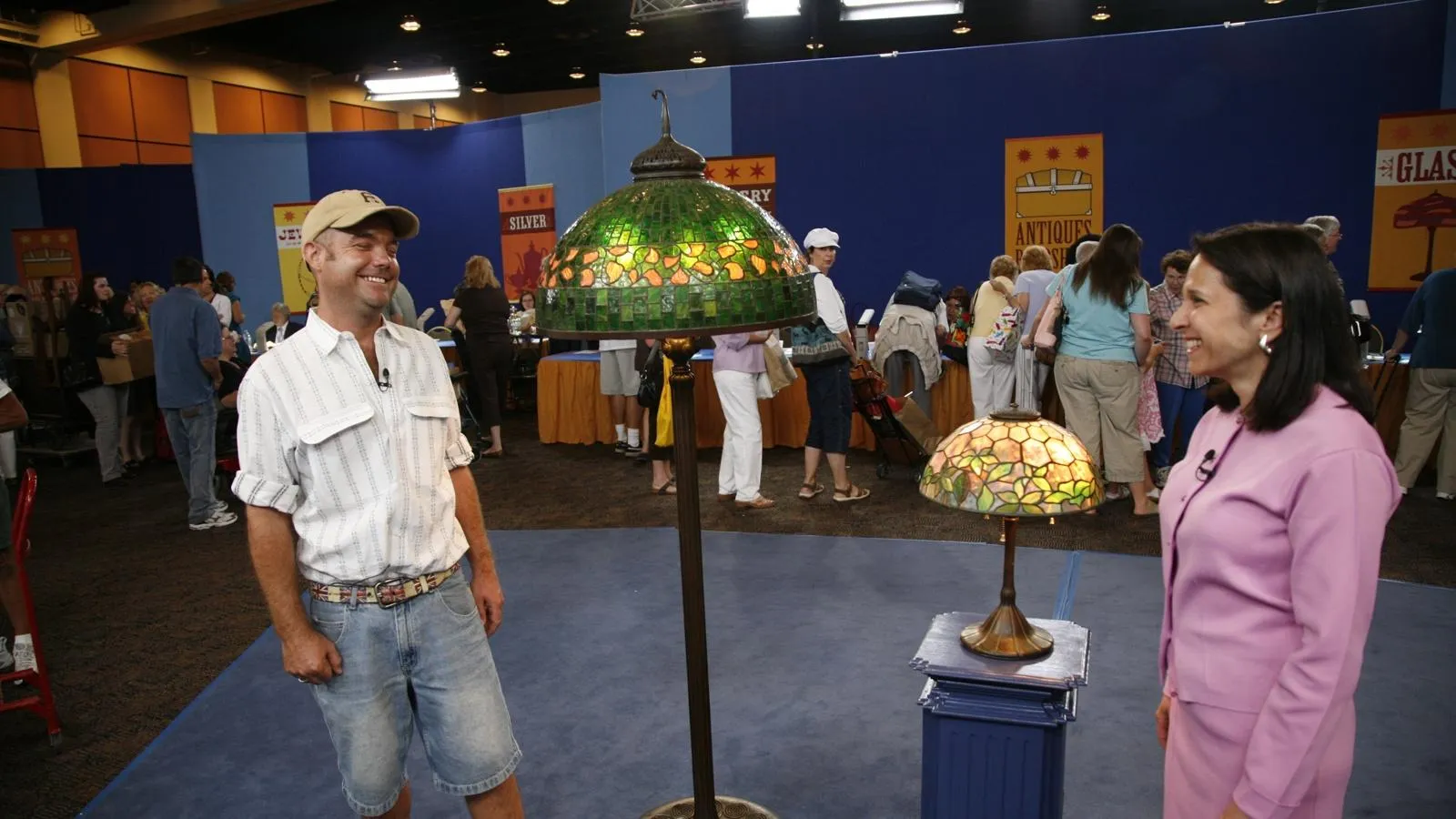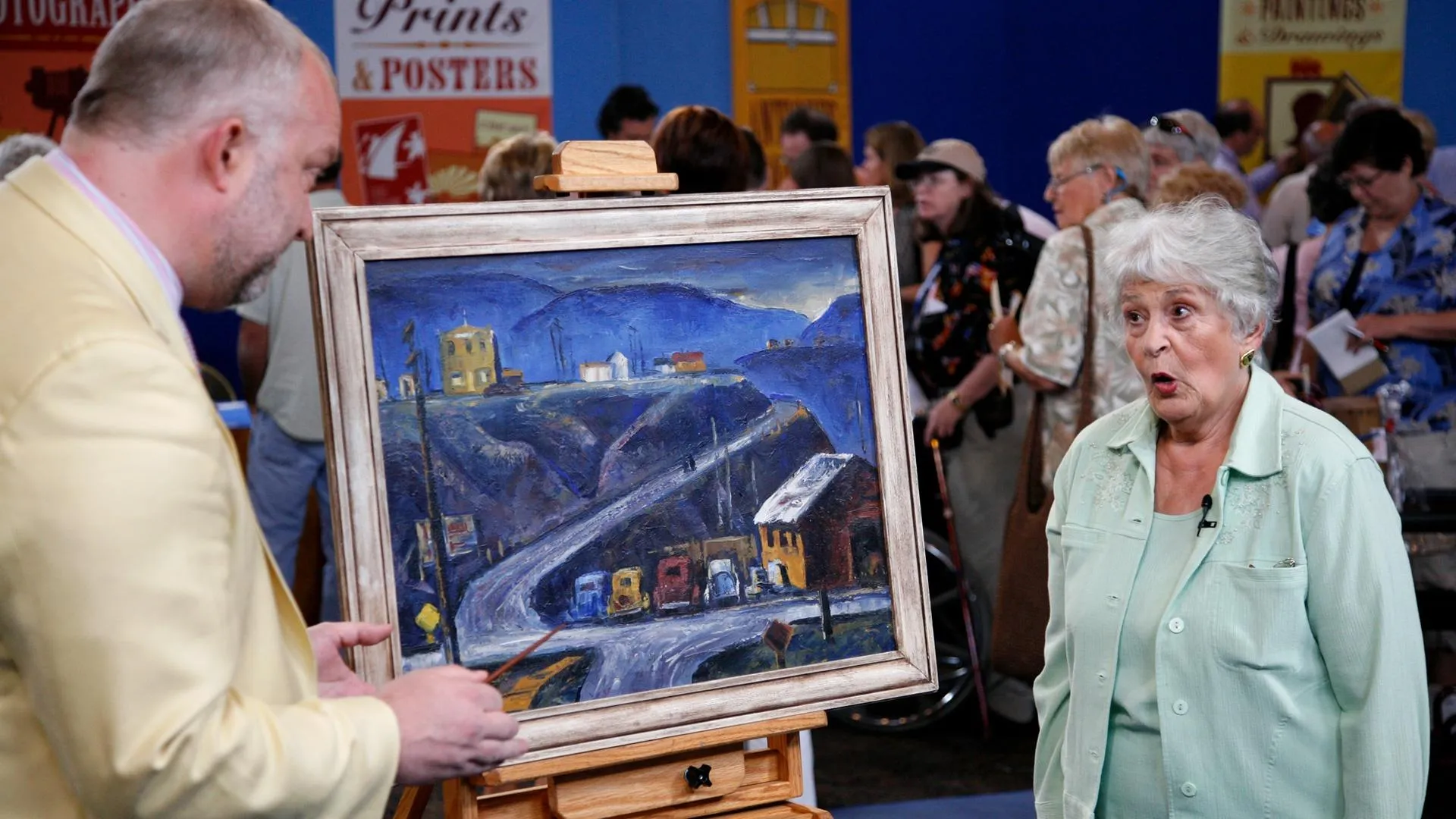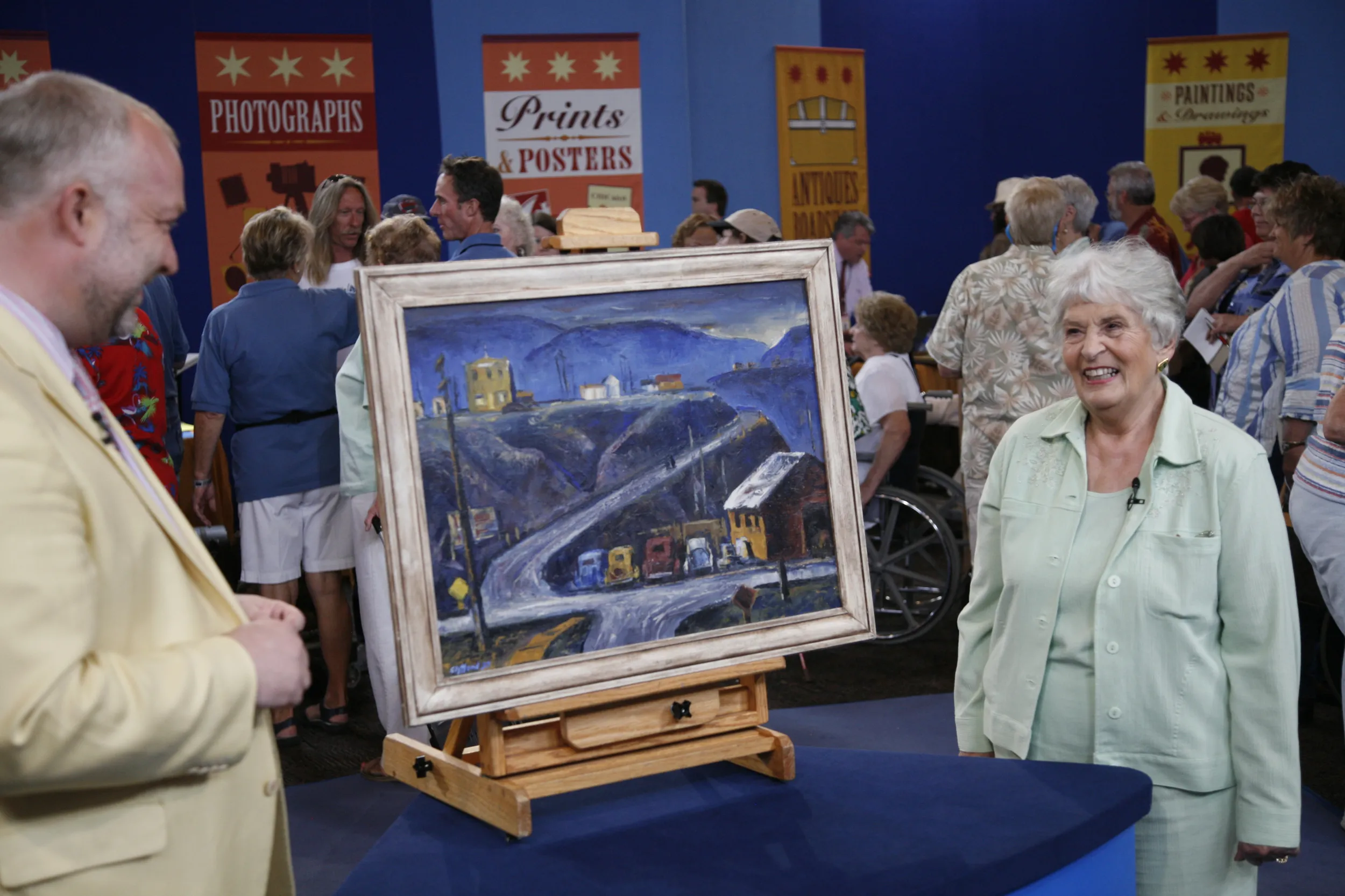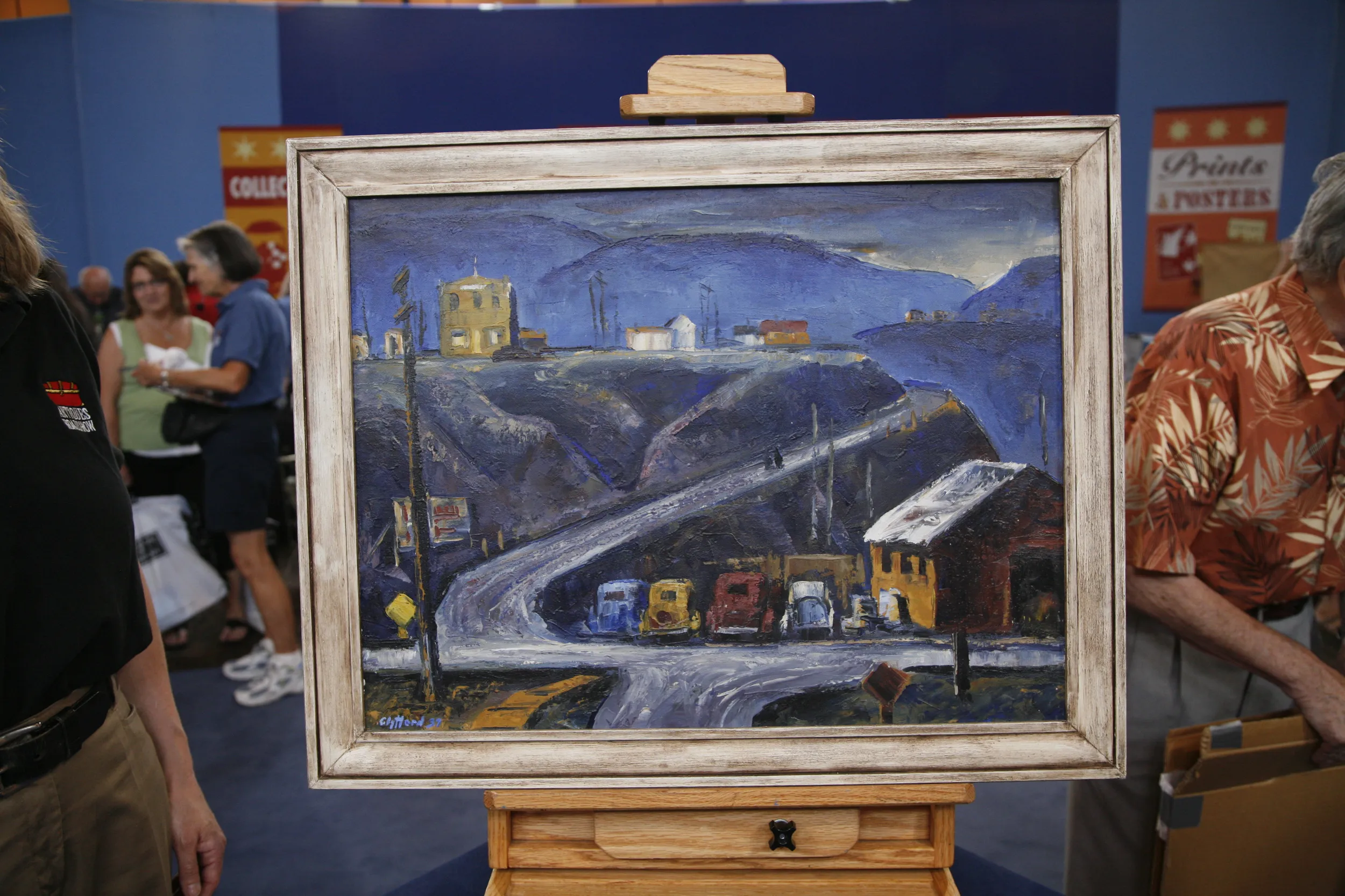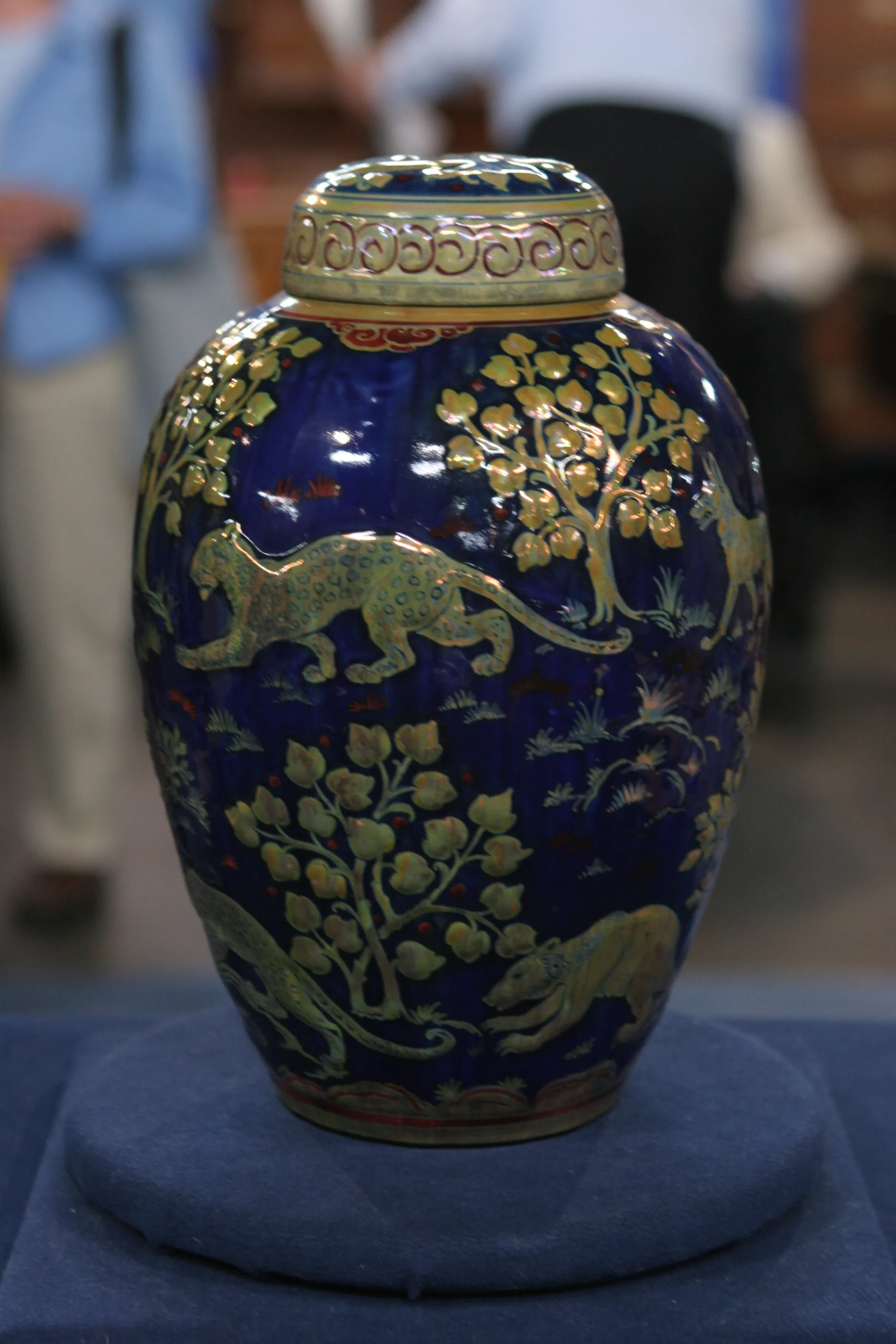GUEST: My husband was a student at Washington State University, and he had an art professor by the name of Clyfford Still. Then, as the years went by, he went on and got his doctorate, and came back to Washington State. And the chairman of his department-- they owned the painting-- they gave it to us as a housewarming.
APPRAISER: That's very generous of them.
GUEST: That's...
APPRAISER: Very nice gift.
GUEST: Yes, it was, very nice, indeed.
APPRAISER: Good heavens! And what do you know about Clyfford Still? Do you, did you follow his subsequent career?
GUEST: Well, we followed him for a little bit. He left Pullman and went back east. And at that time, we heard that he was a Guggenheim protégé. Whether he was or not, I'm not certain, so...
APPRAISER: And this painting, as we can see down here, is signed and dated "Clyfford 37." And I believe there's actually some writing on the back. May I take this down?
GUEST: Yes.
APPRAISER: Just flip it over there. Can you perhaps tell us what it says here? Can you, can you read this?
GUEST: It says, "To my friends the Whiffens." And then it has his name and the date he, '41. That's the date he gave it to the Whiffens.
APPRAISER: I must say, while, while, we have the painting reversed, I was intrigued to see that the supports, the stretchers, are actually rather rudimentary. (chuckles) They're, they're not the kind of stretchers you expect to see on a, by a painting of, of such note as Clyfford Still. But anyway, it's, it's, it's held together over the years, so he must have, he must have done the right thing. Let me just put this back now.
GUEST: It's just as he gave, as, as we got it. We haven't done anything to it.
APPRAISER: Right. And the subject of the painting is?
GUEST: Grand Coulee, during the time they were building the dam.
APPRAISER: Right.
GUEST: It's a big dam in the state of Washington.
APPRAISER: Which is, of course, near Spokane.
GUEST: Yes.
APPRAISER: Where he, he grew up and studied and graduated.
GUEST: Right.
APPRAISER: He's best known as, really, one of the, the founders of the Abstract Expressionist movement.
GUEST: Right.
APPRAISER: He and Rothko and Franz Kline and de Kooning, and Jackson Pollock.
GUEST: Yes.
APPRAISER: And Mark Rothko introduced him to Peggy Guggenheim...
GUEST: Yes.
APPRAISER: ...who's responsible for his first one-man show in New York. This is an earlier work by him, this is from 1937, when he was still doing figurative work.
GUEST: Yes.
APPRAISER: Now, around about 1938 to 1942, he started to make that transition from figurative, representational work to more abstract art. And amongst the other artists, such as Kline and de Kooning, he was one of... He was really the first to do that. He was, he was ahead of them-- they were still working in a figurative manner into the '40s. So he was a little ahead of the curve. Now, have you had this app, appraised before?
GUEST: No.
APPRAISER: And you need to have it appraised for what purpose?
GUEST: Uh, insurance purposes.
APPRAISER: It's an insurance figure. Well, I really feel that, given the importance of the artist, given the importance of this painting, I believe that this shouldn't be insured for anything less than half a million dollars.
GUEST: Really? (laughing)
APPRAISER: Yeah. We have to put that in context. Bear in mind that a painting painted ten years later than this, in 1947...
GUEST: Yeah.
APPRAISER: ...sold a few years ago for $21 million.
GUEST: Oh, really?
APPRAISER: That painting that made $21 million was, was a, was a new benchmark for him.
GUEST: Yes.
APPRAISER: So, in fact, it may turn out that I'm being rather conservative when I say half a million.
GUEST: Well, but that gives us a basis of where to put our insurance.
APPRAISER: I don't think it should be anything less than that.
GUEST: Yeah.
APPRAISER: It's a magnificent painting in its own right. And you can see the Expressionist palette already...
GUEST: Uh-huh.
APPRAISER: ...in the way that he applies the paint. And I have to say, in all my years on the ROADSHOW, it's probably the most exciting find I've had.
GUEST: Oh, really?
APPRAISER: And I'm absolutely thrilled that you brought it in today.
GUEST: Well, thank you.
APPRAISER: So thank you.

